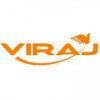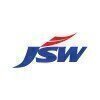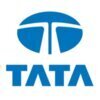Filter interviews by
Ans Steel Tubes Interview Questions and Answers
Be the first one to contribute and help others!
Interview questions from similar companies

Electrical Technician Interview Questions & Answers
SHYAM METALICS AND ENERGYposted on 15 Jan 2025
I applied via AmbitionBox and was interviewed in Dec 2024. There were 5 interview rounds.
(2 Questions)
- Q1. What is the working principle of an overload relay?
- Q2. How is insulation resistance measured?
(2 Questions)
- Q1. How to face Electrical safety
- Q2. What is the process for performing preventive maintenance on a motor?
(2 Questions)
- Q1. What strategies can you use to succeed in an interview?
- Q2. What is the working principle of a star-delta starter?
(2 Questions)
- Q1. What are undervoltage faults?
- Q2. What are overvoltage faults?
(2 Questions)
- Q1. What is the purpose of a thermal relay?
- Q2. What is an RDOL starter?
Interview Preparation Tips

Electrical Engineer Interview Questions & Answers
Jindal Steel and Powerposted on 22 Jan 2025
(5 Questions)
- Q1. I am krishna murthy p
- Q2. I am Instrested bmm ispat company one of the best company
- Q3. One opportunity given sir
- Q4. Electrical engineering
- Q5. I am name krishna murthy p i am stady diploma electrical engineering I am experience totally 8 years
Interview Preparation Tips

I was interviewed in Dec 2024.
1. Capex accounting : Starting process up to Capitalisation, (Budget, Capex Approval, Create CWIP Asset code, PR, PO, GRN, Internal order Settlement, Finally Asset capitalisation.
2. Raw material bill posting of Imported and Domestic accounts related transactions, and Imported material details, Exchange gain/Loss calculation,
Second round interview with the Vice President of Accounts and three section heads, discussion with all TDS, TCS, Sections, and Inter unit reconciliation, RM & Fuel Quarterly third party PV Report, Penalty/Bonus working and parameters of RM & Fuel,
(2 Questions)
- Q1. Salary negotiation round.
- Q2. HR Person not having calculation knowledge. Not able to understand Company accommodation, Also shown Form 16 Also.

Graduate Engineer Trainee (Get) Interview Questions & Answers
Rashmi Metaliksposted on 15 Nov 2024
I applied via Campus Placement
(8 Questions)
- Q1. What is TTT DIAGRAM and its use
- Ans.
TTT diagram is a Time-Temperature-Transformation diagram used in materials science to understand the transformation of phases in a material.
TTT diagram shows the relationship between temperature, time, and phases in a material during cooling or heating.
It helps in predicting the microstructure and properties of a material based on its cooling rate.
TTT diagrams are commonly used in heat treatment processes for metals li...
- Q2. What is difference between ceramic and steel
- Ans.
Ceramic is a non-metallic material made from clay, while steel is a metallic material primarily made from iron and carbon.
Ceramic is non-metallic, while steel is metallic
Ceramic is made from clay, while steel is primarily made from iron and carbon
Ceramic is typically more brittle than steel
Steel is stronger and more durable than ceramic
Ceramic is often used for decorative purposes or in high-temperature applications, w...
- Q3. What is fatigue and what is creep in materials
- Ans.
Fatigue is the weakening of a material due to repeated loading, while creep is the gradual deformation of a material under constant stress.
Fatigue is the process of progressive and localized structural damage that occurs when a material is subjected to cyclic loading.
Creep is the time-dependent deformation of a material under constant load or stress.
Fatigue failure is often characterized by crack initiation and propaga...
- Q4. What are the different types of Steel making
- Ans.
Different types of steel making include basic oxygen furnace, electric arc furnace, and open hearth furnace.
Basic Oxygen Furnace (BOF) - uses oxygen to reduce the carbon content in the steel
Electric Arc Furnace (EAF) - uses electricity to melt scrap steel and produce new steel
Open Hearth Furnace - uses a fuel-air mixture to heat the steel and remove impurities
Other methods include Bessemer process, direct reduced iron,
- Q5. Why do we use alloying elements during Steel making and what are their applications
- Ans.
Alloying elements are used in steel making to improve properties like strength, hardness, corrosion resistance, and machinability.
Alloying elements are added to steel to enhance specific properties such as strength, hardness, toughness, and corrosion resistance.
Common alloying elements include chromium, nickel, manganese, molybdenum, and vanadium.
Chromium is added to improve corrosion resistance, nickel for toughness, ...
- Q6. What is SN curve ?
- Ans.
SN curve is a graphical representation of the relationship between stress and fatigue life of a material.
SN curve shows the number of cycles to failure (N) against the applied stress (S).
It helps in determining the fatigue life of a material under different stress levels.
Materials with higher fatigue strength have a steeper slope on the SN curve.
SN curves are commonly used in engineering to predict the durability of ma
- Q7. What is the composition of pigiron
- Ans.
Pig iron is an intermediate product of the iron industry, made by smelting iron ore in a blast furnace.
Pig iron is typically around 92-94% iron, with varying amounts of carbon, silicon, manganese, sulfur, and phosphorus.
It is brittle and not suitable for use in its raw form, but can be further processed into wrought iron or steel.
The carbon content of pig iron gives it a high carbon equivalent, making it ideal for cast...
- Q8. What is lever rule?
- Ans.
Lever rule is a principle used in material science to determine the relative amounts of two phases in a two-phase system.
Lever rule is used to calculate the fraction of each phase in a two-phase system based on the weight or volume percentages of the phases.
It is commonly used in metallurgy, ceramics, and other material science fields.
The lever rule equation is: L = (C - A) / (B - A), where L is the fraction of one pha...
Interview Preparation Tips
- Steel making
- Iron making
- Physical metallurgy

Site Accountant Interview Questions & Answers
Shyam Steel Industriesposted on 5 Dec 2024
I applied via Job Portal
(7 Questions)
- Q1. Can I handle project site accounts
- Q2. How to handle petty cash
- Ans.
Petty cash should be handled with strict controls and proper documentation.
Designate a specific amount for petty cash and keep it in a secure location.
Create a petty cash log to track all transactions and receipts.
Require receipts for all petty cash expenses and reconcile regularly.
Limit access to petty cash and designate one person responsible for managing it.
Periodically audit the petty cash fund to ensure accuracy a
- Q3. How to check invoice
- Ans.
To check an invoice, verify the details against the purchase order and receipt of goods.
Compare the invoice details with the purchase order to ensure accuracy.
Check the quantities and prices on the invoice against the receipt of goods.
Verify that the invoice includes all necessary information such as vendor details, invoice number, and payment terms.
Ensure that any discounts or credits are applied correctly.
Confirm tha...
- Q4. How to payment made
- Ans.
Payments are typically made through various methods such as checks, wire transfers, online payments, or cash.
Payments can be made via checks, where the payer writes a check to the payee.
Wire transfers involve electronically transferring funds from one bank account to another.
Online payments can be made through platforms like PayPal, credit/debit cards, or mobile payment apps.
Cash payments are made in physical currency,...
- Q5. GST knowledge
- Q6. SAP knowledge
- Q7. ERP knowledge
(2 Questions)
- Q1. How many years experience
- Ans.
I have 5 years of experience working as an accountant in various industries.
5 years of experience as an accountant
Worked in various industries
Familiar with different accounting practices and systems
- Q2. Privious company salary
Skilled check, communication skills check
Interview Preparation Tips

I applied via campus placement at National Institute of Technology (NIT), Rourkela and was interviewed in Dec 2024. There were 2 interview rounds.
Multiple Choice questions concerning Mechanical, Metallurgy departments
(2 Questions)
- Q1. Introduction Whether you worked in any plant for experience gauging ? questions regarding thermodynamics cycles
- Q2. Questions regarding Boilers such as what other parts were present in Boilers ? Why are they mounted ?

Assistant Manager Interview Questions & Answers
Rashmi Groupposted on 12 Nov 2024
I applied via Recruitment Consulltant and was interviewed in Oct 2024. There was 1 interview round.
(3 Questions)
- Q1. All details about DRI600(Direct Reduced Iron Plant) Project with DRI project management and specialist team ,and HR
- Q2. Others technical matter about civil engineering Project. etc.
- Q3. Structural details about DRI Project
Interview Preparation Tips

Assistant General Manager Interview Questions & Answers
Captain Steel India Limitedposted on 6 Dec 2024
I applied via Approached by Company and was interviewed in Nov 2024. There were 5 interview rounds.
(1 Question)
- Q1. Interview call for the job opening with job details briefing
Question based on my experience and what do we expect from each other
Pillars required for process improvements
(1 Question)
- Q1. Discussed about job profile
(1 Question)
- Q1. Salary expectation
Interview Preparation Tips

(2 Questions)
- Q1. What is the process of Performance Management Systems (PMS)?
- Ans.
Performance Management Systems (PMS) is a process that involves setting goals, monitoring progress, providing feedback, and evaluating performance.
Set clear and specific goals for employees to achieve.
Regularly monitor progress towards these goals.
Provide feedback to employees on their performance.
Evaluate performance based on predetermined criteria.
Use performance data to make decisions about promotions, bonuses, and
- Q2. What are the employee engagement initiatives at Grasim?
- Ans.
Grasim focuses on employee engagement through various initiatives such as wellness programs, recognition awards, and career development opportunities.
Wellness programs to promote physical and mental well-being
Recognition awards to acknowledge and appreciate employees' hard work
Career development opportunities such as training programs and mentorship
Employee feedback mechanisms to ensure continuous improvement
Interview Preparation Tips

Junior Engineer Electrical Interview Questions & Answers
Viraj Profilesposted on 13 Nov 2024
I applied via Walk-in and was interviewed in Oct 2024. There was 1 interview round.
(3 Questions)
- Q1. How to check the motor
- Ans.
To check the motor, you can perform various tests and inspections to ensure it is functioning properly.
Check for any physical damage or wear on the motor casing
Inspect the wiring connections for any loose or damaged wires
Measure the voltage and current going into the motor to ensure it is within the specified range
Test the motor's insulation resistance to check for any faults
Run the motor under load to see if it operat
- Q2. How to do power analysis
- Ans.
Power analysis involves measuring and analyzing the electrical power consumption of a system or device.
Identify the components of the system or device that consume power.
Measure the current and voltage across these components using appropriate instruments.
Calculate the power consumption using the formula P = VI, where P is power, V is voltage, and I is current.
Analyze the power consumption data to identify any ineffici...
- Q3. What is tranfamer
- Ans.
A transformer is a device that transfers electrical energy between two or more circuits through electromagnetic induction.
Transformers are used to increase or decrease voltage levels in electrical circuits.
They consist of two coils of wire, known as the primary and secondary coils.
Examples of transformers include power transformers used in electrical substations and voltage transformers in electronic devices.
Interview Preparation Tips
Tell us how to improve this page.
Interview Questions for Popular Designations
- Senior Executive Interview Questions
- Executive Interview Questions
- Team Lead Interview Questions
- Senior Engineer Interview Questions
- Graduate Engineer Trainee (Get) Interview Questions
- System Engineer Interview Questions
- Senior Software Engineer Interview Questions
- Data Analyst Interview Questions
- Show more
Interview Questions from Similar Companies
Ans Steel Tubes Reviews and Ratings
based on 38 reviews
Rating in categories
|
Assistant Manager
6
salaries
| ₹8 L/yr - ₹9 L/yr |
|
Senior Executive
6
salaries
| ₹4.2 L/yr - ₹7.2 L/yr |
|
Executive
6
salaries
| ₹3.3 L/yr - ₹4.6 L/yr |
|
Junior Executive
6
salaries
| ₹2.8 L/yr - ₹4.1 L/yr |
|
Deputy Manager
5
salaries
| ₹10.8 L/yr - ₹12 L/yr |

Jindal Steel and Power

Bhushan Power & Steel

Viraj Profiles

Rashmi Metaliks
- Home >
- Interviews >
- Ans Steel Tubes Interview Questions







